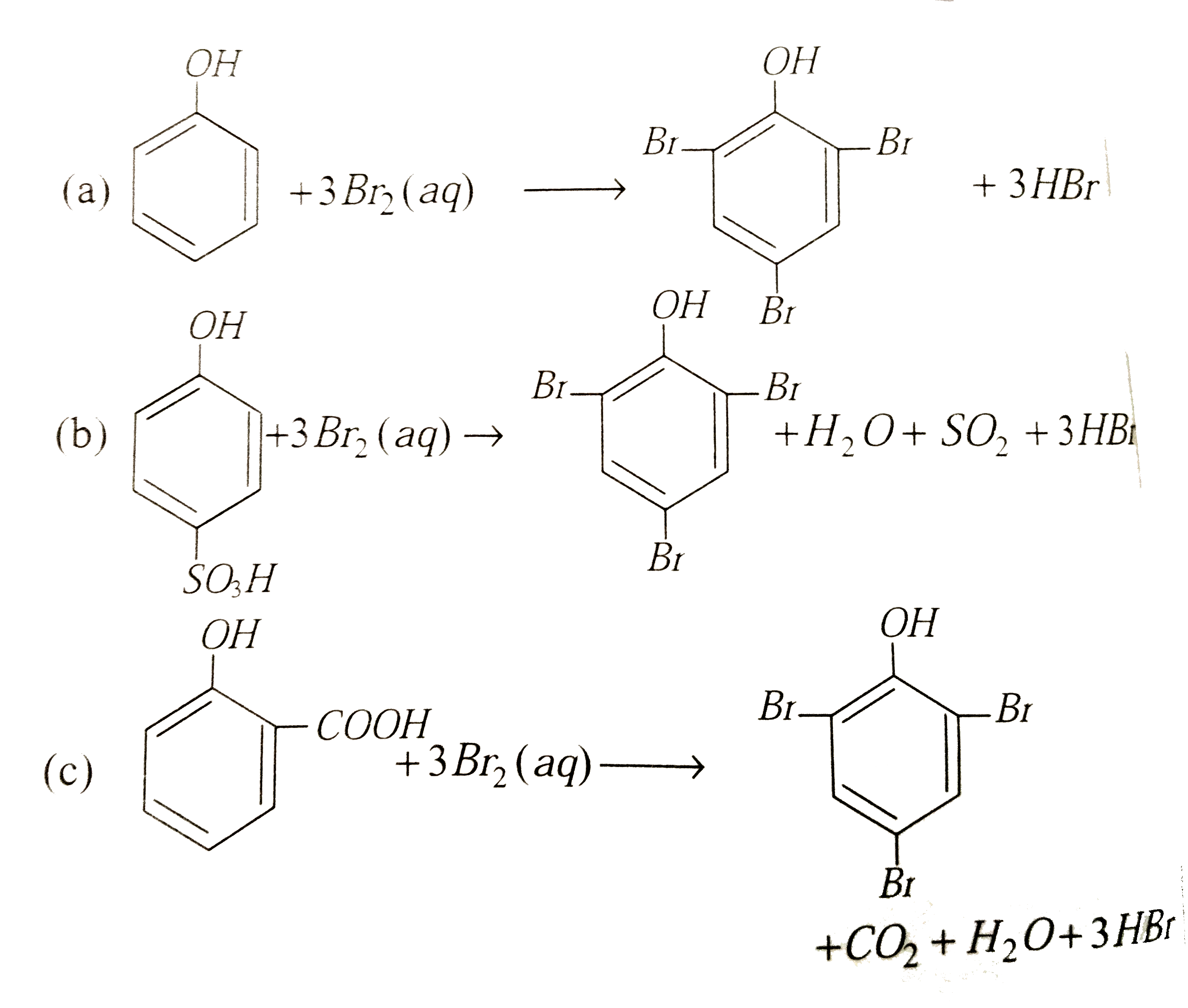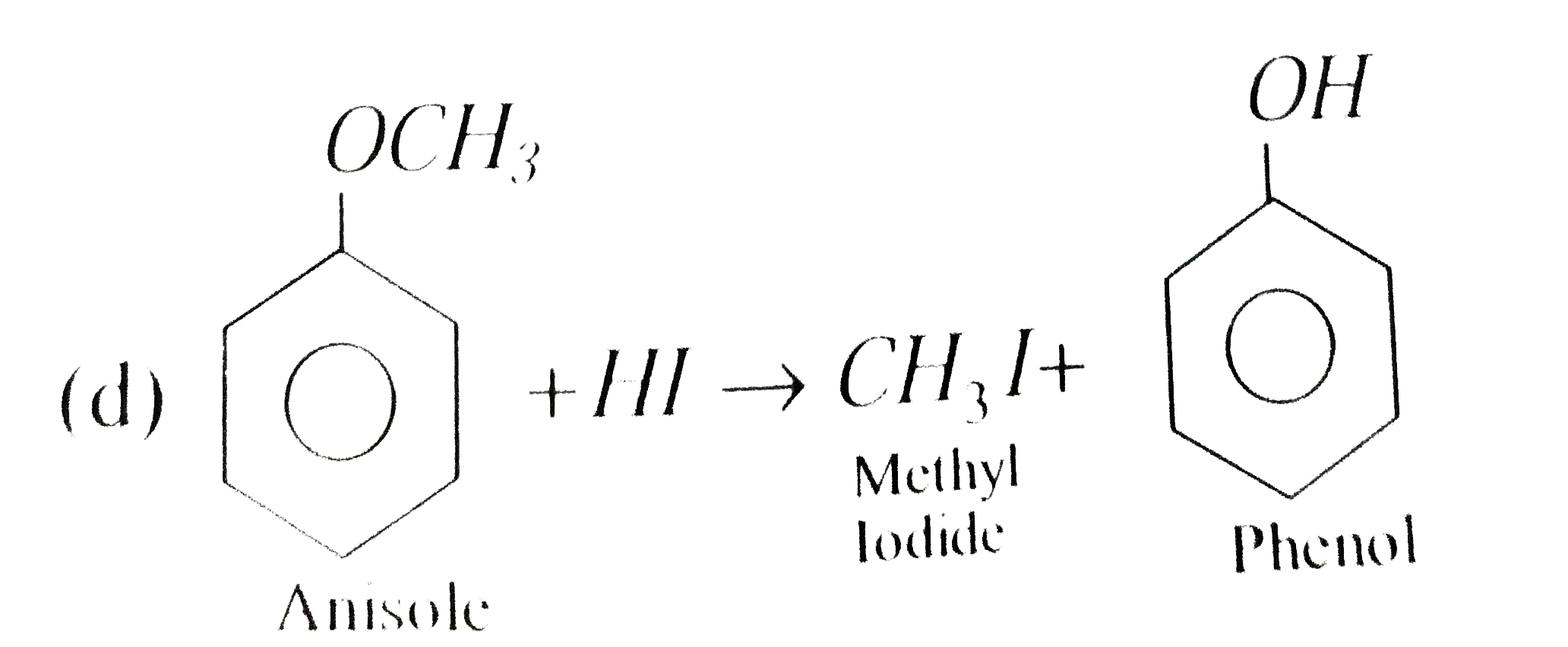InterviewSolution
This section includes InterviewSolutions, each offering curated multiple-choice questions to sharpen your knowledge and support exam preparation. Choose a topic below to get started.
| 3701. |
Which of the following statements about anhydrous aluminium chloride is correct? |
|
Answer» It EXISTS as `AlCl_(3)` molecules in vapour. |
|
| 3702. |
Which of the following polymers is generally used in making carry bags ? |
|
Answer» POLYESTER |
|
| 3703. |
When acetyl chloride reacts with any amine, the reaction is known as: |
|
Answer» SAPONIFICATION |
|
| 3704. |
Which of the following haloakane is hydrolysed b SN^(1)mechansims ? |
|
Answer» `CH_(3)BR` |
|
| 3705. |
What is a primary electrochemical cell? |
| Answer» SOLUTION :A CELL that cannot be RECHARGED again and again is CALLED PRIMARY cell. | |
| 3706. |
Which of the following statement about H_(3)BO_(3) is not correct |
|
Answer» It is strong TRIBASIC acid |
|
| 3707. |
What is the free energy change DeltaG when 1.0mole of water at 100^(@)C and 1 atm pressure is converted into steam at 100^(@)C and 1 atm pressure |
|
Answer» 540 CAL |
|
| 3708. |
Which is the most stable conformation of 3,4-dimethylihexane? |
|
Answer»
|
|
| 3709. |
Zn(OH)_(2) undersetto(Delta)[X] Select the correctstatement (s) for the compound X. |
|
Answer» `X` on HEATING with cobalt nitrate gives green mass (B) It TURN yellow on heating and becomes white on cooling. (C )` ZnCl_(2)` form bluish white//white precipitate. `Zn_(3)K_(2)[Fe(CN)_(6)]_(2)` `3Zn^(2)+2K^(+)+2[Fe(Fe(CN)_(6)]^(4-)toK_(2)Zn_(3)[Fe(CM)_(6)]_(2)downarrow` (D) `ZnO+2NaOHtoNa_(2)ZnO_(2)("Soluble complex")+H_(2)O`. So, option`A,B& C` are correct. |
|
| 3710. |
What is the productof the following reaction ? |
|
Answer» |
|
| 3711. |
What is the correct relation ship between the pH values of isomolar solution of Na_(2)(O(pH_(1)), Na_(2)S(pH_(2)), Na_(2)Se(pH_(3)) and Na_(2)Te(pH_(4)) ? |
|
Answer» `pH_(1) lt pH_(2) lt pH_(3)lt pH_(4)` |
|
| 3713. |
Which of the following on reaction with Br_(2) water will give2,4,6-tribromo phenol |
|
Answer» Phenol 
|
|
| 3714. |
Which of the following metal does not obtained by electrolysis of its aqueous salt solution ? |
|
Answer» Ag |
|
| 3715. |
The two electrons have the following set of quantum numbers: P=3,2,-2,+1/2 Q=3,0,0,=1/2 Which of the following statement is true? |
|
Answer» <P>P has lesser energy than Q `:.` P has greater energy than Q. |
|
| 3716. |
Which one of the following reaction will not result in the formation of carbonation bond ? |
|
Answer» Reimer-Tiemann reaction |
|
| 3717. |
Which of the following anions is most easily polarised ? |
| Answer» Answer :D | |
| 3718. |
Total number of possible structural isomers of C_(5)H_(11)Br. |
|
Answer» <BR> SOLUTION :`[C_(5)H_(11)Br]` , Total =8(a) `C-C-UNDERSET(Br)C-C-C-Br` (b) `C-C-C-overset(Br)overset(|)C-C` (c ) C-C-C-C-C (d) `C-C-underset(C)underset(|)C-C-Br` (E) `C-C-overset(Br)overset(|)underset(C)underset(|)C-C` (f) `Br-C-C-underset(C)underset(|)C-C` (h) `C-overset(C)overset(|)underset(C)underset(|)C-C-Br` (i) `C-overset(Br)overset(|)C-C-underset(C)underset(|)C-C` |
|
| 3719. |
To detect the reducing and non reducing sugars, which of the following test is used |
|
Answer» MOLISCH TEST |
|
| 3720. |
Write IUPAC names of the following |
|
Answer» SOLUTION :i) 3-Bromo- 2 - methylpropene II) 4-Bromo- 3-methylpent - 2 - ene iii) 1 - Bromobut - 2 - ene IV) 1-Bromo-2-methylbut-2-ene . |
|
| 3721. |
The two ions A^+' and 'B^- have radii 85 and 200 pm respectively. In the closed packed crystal of compound AB, the coordination number of A^+ ion is |
|
Answer» 3 |
|
| 3722. |
Which of the following statements is not true about low density polythene? |
|
Answer» Tough |
|
| 3723. |
What happens when NH_3is treated with chlorine in small quantity? |
|
Answer» SOLUTION :`N_2` GAS is PRODUCED. `8NH_3 + 3Cl_2 →N_2 + 6 NH_4 CL` |
|
| 3724. |
Which is used in discomfort ? |
|
Answer» EQUANIL |
|
| 3725. |
The vapour pressure of water is 12.3 kPa at 300 K. Calculate the vapour pressure of 1 molal solution in it. |
|
Answer» <P> Solution :1 molal solution means 1 mol of the SOLUTE in 1 KG of the solvent (water).`therefore"Mol fraction fraction of solute "=(1)/(1+55.5)=0.0177` `"Now,"(p^(@)-p_(s))/(p^(@))=x_(2), i.e.,(12.3-p_(s))/(12.3)=0.0177"or"p_(s)="12.08 kPa."` |
|
| 3726. |
To prevent oxidation of chloroform …….. is added. |
|
Answer» Orthophosphoric ACID 
|
|
| 3727. |
What is the action of ethanol on acetaldehyde ? What is the action of ethylene glycol on acetone? |
Answer» Solution :Aldehyde reacts with one equivalent of monohydric alcohol in the presence of dry hydrogen chloride to form an intermediate KNOWN as hemiacetal, which further adds another MOLECULE of alcohol to form a gem-dialkoxy compound known as acetal. Ketone reacts with ethylene GLYCOL under similar CONDITIONS to form cyclic PRODUCTS known as ethylene glycol ketals. 
|
|
| 3728. |
Which is the simplest electrolytic cell ? Give detailed note on it. |
|
Answer» Solution :* One of the simplest electrolytic cells consists of two copper strips dipping in an AQUEOUS solution of copper sulphate. * Construction : It consists of two strips dipping in an aqueous solution of copper sulphate. One is anode and another is cathode. * Working : If DC voltage is applied to the two electrodes, then `Cu^(2+)` ions discharge at the cathode (negatively charged) and the following reaction TAKES place: `Cu_((aq))^(2+)+2e^(-) to Cu_((S))` * Copper METAL is deposited on the cathode. At the anode, copper is converted into `Cu^(2+)` ions by the reaction: `Cu_((S)) to Cu_((aq))^(2+)+2e^(-)` * Thus, copper is dissolved (oxidised) at anode and oxidation is carried out. So total reaction: `underset("Impure")(Cu_((S)))("anode") to underset("pure")(Cu_((S)))("cathode")` * Uses: This is the basis for an industrial process in which impure copper is converted into copper of high PURITY. the impure copper is made an anode that DISSOLVES on passing current and pure copper is deposited at the cathode. |
|
| 3729. |
Xenon tetrafluoride, XeF_4is : |
|
Answer» tetrahedral and ACTS as a FLUORIDE DONOR with `SbF_5` |
|
| 3730. |
Which of the following solid has maximum melting points? |
| Answer» ANSWER :D | |
| 3732. |
When anisole is heated with HI, the product is |
|
Answer» PHENYL IODIDE and METHYL iodide 
|
|
| 3733. |
When a pinch of sodium bicarbonate is added to carboxylic acid brisk effervescence is produced . This effervescence is produced due to evolution of |
|
Answer» `H_2` gas `underset("Carboxylic acid ")(RCOOH) + underset("bicarbonate")underset("Sodium")(NaHCO_(3)) to RCOONa + CO_2 uarr + H_(2) O` Large amount of `CO_(2)` gas is released in the reaction which produces brisk effervescence . |
|
| 3734. |
The Van't Hoff factor i for a 0.2 molal aqueous solution of urea is |
|
Answer» `0.2` |
|
| 3735. |
Whichis morebasic La(OH)_(3)or Lu (OH)_(3)? Why |
| Answer» SOLUTION :`La(OH)_(3)`, due to lanthanide contraction, LOWER SIZE, more covalent character,N least basic. | |
| 3736. |
Which reagent reduce aldehyde and ketone Alcohol ? |
|
Answer» SODIUM BOROHYDRIDE `(NaBH_(4))` |
|
| 3737. |
Which gives blue bead in borax bead test: |
|
Answer» `CR^(2+)` |
|
| 3738. |
Which of the following is a Hydride of Nitrogen |
|
Answer» `NH_(3)` |
|
| 3739. |
Which of the following solutions having same concentration will have lowest pH value? |
|
Answer» KCl |
|
| 3740. |
Write the role of I_2 in the Arkel method of refining. |
|
Answer» Solution :Zr to Ti is HEATED with iodine to form a VOLATILE compound which on HEATING DECOMPOSES to give PURE Zr or Ti. `{:(Zr+2I_(2) to ZrI_(4)),(" (Impure)(Volatile) "),(ZrI_(4) overset(1800K)(to) Zr+2I_(2)),("Pure "):}`. |
|
| 3741. |
Which of the following is/are correct for potassium ferrocyanide ? |
|
Answer» It GIVES a brown precipitate with `Cu^(2+)` ions. |
|
| 3742. |
What are inner - transition elements ? Decide which of the given atomic numbers are the number of the inner transition elements:29, 59, 74,95, 102, 104. |
| Answer» Solution :The f-block ELEMENTS , i.e., in which the last ELECTRON enters into f-subshells are called inner - transition elements. These INCLUDE lanthanoids ( 58- 71) and actinoids ( 90 - 103) . Thus, elements with atomic numbers 59 , 95 and 102are inner transition elements. | |
| 3743. |
The yeild of production ofA_2(g) + 2B(g) |
|
Answer» HIGH TEMPERATURE and high pressure |
|
| 3744. |
Which of the following statement is/are false ? |
|
Answer» `Delta_rS` for `1/2Cl_2(g)toCl(g)` is POSITIVE (B) In closed container `DeltaV=0` hence work cone is zero. There is no heat exchange . Hence `DeltaE=q+W=0` ( C)`DeltaG` will be zero only when equilibrium is reached. `:.` not a function of pressure (D)`DeltaG^@= - RT` In `K_(eq)` `:.` not a function of pressure |
|
| 3745. |
What are condensation polymers? Given an example. |
|
Answer» Solution :The POLYMERS that are formed by repeated condensation reaction between two different bi-functional ortrifunctional monomeric UNITS with the ELIMINATION of simple molecules like water, methyl alcohol, ammonia, hydrogen chloride etc are called as condensation polymers. Example: Nylon-6,6 is formed by the condensation hexamethylene diammine with adipic acid. `n H_(2)n(CH_(2))_(6)NH_(2)+n HCOOC(CH_(2))_(4)COOH to [-NH(CH_(2))_(6)NHCO(CH_(2))_(4)CO-]n +2nH_(2)O` |
|
| 3746. |
Which of the following can reduce Tollen's reagent? |
|
Answer»
|
|
| 3748. |
The vapour pressure of a 5% aqueous solution of a non-volatile organic substance at 373 K. Is 745 mm. Calculate the molecular mass of the solute. |
|
Answer» Solution :A 5% aqueous solution means 5 g of solute in 100 g of solution. Mass of solution (WATER)=100-5=95g Vapourt pressure of solution at 373 K = 745 MM Vapour pressure of water at 373 K 760 mm According to Raoult's Law, `=(p_(A)^(@)-P_(S))/P_(S)=n_(B)/n_(A)=W_(B)/M_(B)xxM_(A)/W_(A)` `((760mm-745mm))/((745mm))=(%5gxx(18g MOL^(-1)))/(M_(B)XX(95g))` `15/745=((5g)xx(18gmol^(-1)))/(M_(B)xx(95g))` `M_(B)=((5g)xx(18gmol^(-1))xx745)/((95g)xx15)=47 g mol^(-1)` |
|
| 3749. |
Which reactions distinguish aldehydes and ketones ? |
|
Answer» Fehling.s SOLUTION |
|
| 3750. |
Washing soaps are potassium and sodium salts of : |
|
Answer» Formic, acetic and maleic acid |
|